MINIACRC MIGHTY MINI P47 THUNDERBOLT BUILD
 Legends tell that if you were in a dive, being chased down by a P47 from above, you were as good as gone. Pilots trusted the radial engine-powered aircraft enough to brag of being able to barrage through brick walls unfazed. Such was the prowess of the Republic Thunderbolt, that earned it the nickname of Juggernaut or Jug! Although it remains debated whether the Jug held an unquestionable edge over the likes of the Focke-Wulf 190, it is safe to declare that the Thunderbolt will forever be hailed as one of history's heaviest and most fearsome single-engine fighter-bombers.
Legends tell that if you were in a dive, being chased down by a P47 from above, you were as good as gone. Pilots trusted the radial engine-powered aircraft enough to brag of being able to barrage through brick walls unfazed. Such was the prowess of the Republic Thunderbolt, that earned it the nickname of Juggernaut or Jug! Although it remains debated whether the Jug held an unquestionable edge over the likes of the Focke-Wulf 190, it is safe to declare that the Thunderbolt will forever be hailed as one of history's heaviest and most fearsome single-engine fighter-bombers. To this day, the P47 is a highly respected aircraft in the world of RC parkflyers, with pilots consistently lauding their models as versatile stunt planes. Due to its signature rounded fuselage and quasi-elliptical wing planform, the Jug rendered itself an exciting challenge for foamboard modeling at the mighty mini scale. Check out the release video below to see some formation flight footage of the Mighty Mini Thunderbolts!
To this day, the P47 is a highly respected aircraft in the world of RC parkflyers, with pilots consistently lauding their models as versatile stunt planes. Due to its signature rounded fuselage and quasi-elliptical wing planform, the Jug rendered itself an exciting challenge for foamboard modeling at the mighty mini scale. Check out the release video below to see some formation flight footage of the Mighty Mini Thunderbolts!
The vision was to create a swappable that would bring to life the brutal aerial dominance of the P47 while preserving the forgiving flight envelope that is so characteristic of FliteTest-style warbirds. I wanted all the warbird geeks in the FT community to be able to enjoy a sporty P47 foamy in their backyard that has the same authenticity and aerial presence as that of a larger gas-powered model.
Specs:
Wingspan: 24.8" , 638 mm Motor: 2205 2300+ KV (F pack)
All-up weight: 290 g , 10.2 oz Propeller: 5x4 to 6x4 two-blade
CG location: 1.2" rear of wing root ESC: 20 to 30 amp
Servos: Three to four 5-9g servos Battery: 3S 850 to 1300 mAh
 First and final prototypes
First and final prototypes
Plans and Build Video:
The all-in-one plans sheet is available below for download. The front page lists the model specifications including the CG location and wingspan. Subsequently, full-sized plans are provided on ANSI-D 34"x22" sheets, followed by regular tiled plans. An important note is to remember to pay attention to the grain direction specified on the plans for the molded pieces, both foamboard and posterboard. Also, try as much as possible to cut on the black lines for the formers and molds to avoid tolerance-related inconsistencies in the build process.
Mini P47 AIO Final Release Plans.pdf
The build video below will walk you through all the steps necessary to go from individual pieces to the assembled Jug. It is highly recommended to watch the entirety of the video before attempting the build, not only to wrap your head around the build process, but also to take notes on where you may want to deviate from the directions to make custom modifications like an FPV setup. Timestamps are provided in the description below the video (on Youtube) should you ever need to refer to a specific step on the build process in the future.
Also, try referring to this online 3D model of the foamboard design if you ever need to visualize a certain portion of the build not shown clearly on the video. You can orbit around the model through the graphical user interface available on the Sketchfab website using your mouse/track-pad.
Design Features:
While the immense amount of molding on this build can seem challenging at first sight, it actually renders several unique advantages for the experienced foamboard builder. First and foremost, the amount of score-cutting reduces dramatically with the introduction of 'free-form' structures. For example, both wings can be hand-cut and built in a matter of minutes, and the spar itself will constrain the shape of the molded-over airfoil.

The fuselage requires some internal structure including a main fuselage box, some stringers and a few formers. Unlike larger builds, the Mini P47 has a build-style that involves allowing adjacent molds to share the same former! Slightly advanced techniques such as edge-sanding and sheet molding allow the molds to wrap around these formers, establishing the signature shape of the Jug. Each hobbyists' build can be customized by trimming the extended molds, subtracting the number of required tabs and slots that all hand-cutters know and ... not necessarily love.


Despite the widespread lionization of the Razorback P47 variants, there was enough interest among the FT community in the Bubbletop to warrant a design branch that would allow just a couple of pieces to distinguish between the two models. Those two pieces are the canopy and the turtle deck, the only posterboard components of the build.

Finally, although the Jug has proven itself to be a tough and resilient airframe, the cowling has been designed to be removable and replaceable. The powerpod is constrained with popsicle stick rails underneath to eliminate wobble, and both the pod and the cowling are secured with a single wooden skewer. In the event of a nosedive, the internal structuring should hold the fuselage intact and one needs only to rebuild and replace the cowling (which consists of two formers and two molds). Before we discuss the flight characteristics of the Jug, let's take a look at what the beta community contributed to this design.

Beta Builds:
I owe many sincere thanks to the wonderful beta builders who brought this dream into reality. Once the pre-production prototype proved its worth on the ground and in the air, the amazing team of beta testers tried their hand at cutting out the plans and assembling the mini Jug. Displayed below are their interpretations of the model.
 Needle-cutting setup by Michael Hetrick
Needle-cutting setup by Michael Hetrick The man himself: Nic Lechner's smooth molding
The man himself: Nic Lechner's smooth molding First completed beta build: Jason Potosky
First completed beta build: Jason Potosky
 Caleb Higdon overcoming a brief 'builder's block'
Caleb Higdon overcoming a brief 'builder's block' Stunning rendering by Navy Veteran David Swartz
Stunning rendering by Navy Veteran David Swartz Gil Radomsky's eye-popping pinstripe shiner
Gil Radomsky's eye-popping pinstripe shiner A vintage racer Jug-bee by Allen Darryl Pilkington
A vintage racer Jug-bee by Allen Darryl Pilkington Josh Doucet's ultra-smooth tape-covered Thunderbolt
Josh Doucet's ultra-smooth tape-covered Thunderbolt

 George Coia's classic one-week 'speedy' build
George Coia's classic one-week 'speedy' build

 D-Day ready Thunderbolt by Daniel Basil
D-Day ready Thunderbolt by Daniel Basil
Flight Performance:
Flying this model is a treat both to the eyes of onlookers and to the pilot themselves. The first and most surprising characteristic I noticed during the maiden of the first flyable prototype, is the docile stability of this mini Jug. Similar to the FliteTest Spitfire, the generous elliptical wings on the Mighty Mini P47 give it a 'locked-in' feel during straight passes, smooth turns and even gliding approaches.  However, dialing in the proper expo and dual rates will help you get the best experience from this model. Recommended throws are provided on the front page of the plans. The key is to provide a suitable amount of expo to soften climb-outs, turns and landings, while maintaining enough dual rates to allow for sporty aerobatics. 70% dual rates and 30% expo is a recommended base setting to work from. This Jug can fly stably and predictably on its own, but due to its inertia, it requires significant aileron authority to throw the wings around for barrel rolls and immelmann turns.
However, dialing in the proper expo and dual rates will help you get the best experience from this model. Recommended throws are provided on the front page of the plans. The key is to provide a suitable amount of expo to soften climb-outs, turns and landings, while maintaining enough dual rates to allow for sporty aerobatics. 70% dual rates and 30% expo is a recommended base setting to work from. This Jug can fly stably and predictably on its own, but due to its inertia, it requires significant aileron authority to throw the wings around for barrel rolls and immelmann turns.

Taking the Jug off is a relaxing experience due to its size. On the second flight of the pre-production prototype, I tossed it up without sufficient throttle and the plane nearly stalled about five feet above ground. Panicking, I fire-walled the throttle and surprisingly, the Jug zoomed right off, without a touch of torque roll or leftward yaw! On a 2300 KV motor, both underhand and overhead tosses should unfold uneventfully. Higher KV motors will make this P47 scream even on 3-cell, but stepping down to a 5" propeller may be preferable for less experienced pilots.

The Jug definitely does not fall short of exhilarating when it comes to aerobatics. From long and lazy cuban eights to snap rolls and vertical climbouts, the mini P47 can push the limits of foamboard model performance in the right hands. Similar to the FliteTest Mini Mustang, it can switch between docile low passes and high energy stunts with a click of the rates switch. Depending on the weight of your build, you may need to carry some throttle on landing approaches, but team member David Haakinson and I both noticed that the Mini P47 – once well trimmed – can break into an effortless and smooth glide.

Experienced builder and pilot George Coia related his account of flying his wonderful build:
"The mini p-47 looks more like a store-bought model than a DIY build. For it's size it [flies] amazingly stable. And super fast with a 2205RS 4S setup. Nobody at my flight club could believe it was a foam board model until they got up close to it. Love this plane ... close to 100 flights so far."

Whatever your skill levels are in terms of building and flying, I hope that this model has inspired you to follow your passion in aviation and pursue your dream projects. As for this P47, the design could not have come to reality without the support and unfailing encouragement from the FliteTest community, especially each and every one of the beta builders. It was truly humbling to see members such as speed legend Nic Lechner, retired Navy veteran David Swartz and experienced scratchbuilder Jason Potosky put their minds and hearts together to push this build to the next level.

Today, the 27th of June, is National PTSD Awareness Day, and I would like to dedicate this project to all those who served for justice and humanity. It is my honor, as a member of the FliteTest family, to play a small role in carrying the legacies of their service and of aviation stalwarts like the P47 Thunderbolt into the coming years.
Words aren’t enough to thank FliteTest for the encouragement and support they provided through their show and their community for me to pursue this design in an economical and educational manner. Thank you for reading this article, and happy flying!!!
Signing off - MiniacRC



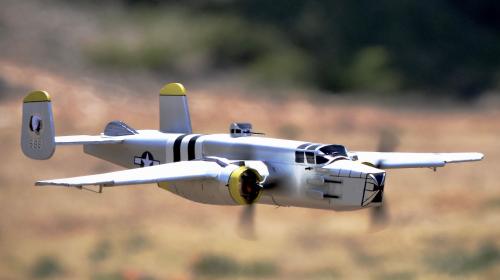
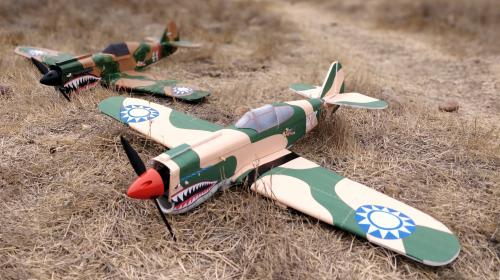
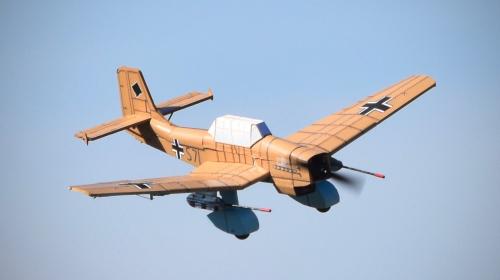


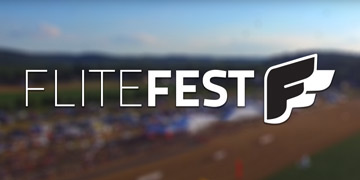


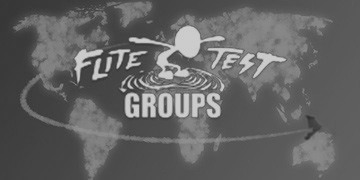

Log In to reply
Log In to reply
Log In to reply
Log In to reply
Been doing this on balsa models for years....
:-)
Log In to reply
My first idea a few months back, was to create those holes on the plans themselves but there was too much variability in each individual builder's work for it to work consistently. I like your idea of custom marking them while building.
But we worked out a sort-of cheaty way to fix the angle. In the build video I show a simple technique for establishing wing incidence to be flat with certain mold on the plane while gluing it in. This technique along with a zoomed out eyeball seemed to do the trick for the beta team. :) On the first prototype I hadn't even paid attention and the wings were about 20 degrees apart in pitch. And the plane flew near perfect so hopefully the guesswork won't do too much damage on this build. Thanks again sir! I could never pull off a balsa build!
Log In to reply
Log In to reply
Log In to reply
I did one thing: I scaled down the Canopy to 80%. (And I also made some mistakes building) Would like to post some pics of her. Maiden was yesterday 9. July, 8 p.m.
Had some problems to get the wings level in the build, ajusted it after maiden...
Log In to reply
Yeah the wing alignment was a tricky part due to the cantilever. I described on the build video one way to use the edge of a table as an incidence gauge rather than having to build a whole cradle. Were you able to find that part on the vid?
Log In to reply
I would make sections out of solid foam and glue Thema together. If you like I would Share the result and datawith the Community.
Thanks,
Rado
Log In to reply
Log In to reply
Log In to reply
Log In to reply
Then I went to test fly agian and I could take out the aileron trim...
Log In to reply
Yeah the spaced double cradle is something I wanted to add but figured that it would be very roundabout and add a whole page to the plans :(
So I chose to go with using the edge of a table or desk instead. The method is outlined in the build video where the wings are glued on. But yeah I would fancy the cradle myself, looking back. :) Might add it when I get back from my family trip.
I'm so glad yall took a shot at the build. I'd LOVE to see your work (probably on the forums/Facebook)
Log In to reply
Log In to reply
Log In to reply
Log In to reply
The wing is fairly thick to begin with, but I do know that some folk have up-scaled the entire design to 135% (you should be able to find them on the FliteTest forum website). I can only guess that the aircraft only flies more stably and with a wider envelope at that size if powered with the right battery.
Log In to reply